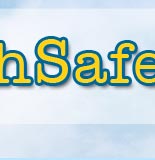 |
 |
 |
 |
 |
 |
|||||||||
Join our mailing list and receive updates about our activities. |
|
Environment |
• There is a noticeable lack of care toward the physical appearance of the classrooms. |
• Student work is not displayed. |
• The room is often cluttered, and there is a lack of organization. |
• Excessive lists of rules are expressed negatively. |
• There is a lack of evidence of positive behavioral goals; positive, posted class rules are not evident. |
• There is no evidence of student creativity – art, creative writing, and cultural creations. |
Student Behavior |
• Many students are not attending school. |
• Students are not working productively. |
• Students display disruptive behaviors. |
• Many students work in isolated areas of the room. |
• Students are bored. |
• Students do not appear to understand the routine, or there is no routine. |
• Students do passive seat work. |
Teacher Behavior |
• The teacher sits behind the desk while children are doing individual seatwork even though some are confused. |
• The teacher is yelling or screaming. |
• The teacher does not know the IEP goals of students. |
• The teacher verbalizes frustration. |
• The teacher has no conceptual framework to direct instruction or manage the classroom. |
• The teacher resorts to punitive actions due to lack of involvement rather than trying to engage the student positively. |
• Lessons do not engage all of the students, and the teacher makes little effort to interest students in the task. |
• Lesson planning does not appear obvious. |
• Time spent on behavioral control is greater than time spent on instruction. |
• Little or no individualized instruction exists. Students are grouped in classical three groups of learners. |
• There is no evidence of cooperative learning |

This web site has been produced by The Melissa Institute for Violence Prevention and Treatment to provide research-based school violence prevention procedures for educators. The web site has been made possible with the generous support of the Robert and Renee Belfer Foundation and other supporters. |
 |
The Melissa Institute for Violence Prevention and Treatment to provide research-based school violence prevention procedures for educators Terms and Conditions |
|
 INDICATORS OF TROUBLED SCHOOLS
INDICATORS OF TROUBLED SCHOOLS